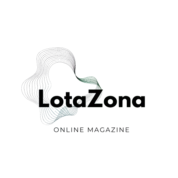Art and design are two fields that, while distinct, often intersect in fascinating ways. Both disciplines are driven by creativity, but they serve different purposes and engage with their audiences in unique manners. Art is often seen as a form of personal or emotional expression, while design is typically oriented toward solving problems and improving functionality. However, the boundaries between art and design are increasingly blurred, leading to innovative practices that blend aesthetic beauty with practical utility. This article explores the relationship between art and design, their individual contributions to society, and the ways in which they continue to influence each other.
The Essence of Art
Art is a broad category that encompasses a wide range of creative expressions, including painting, sculpture, photography, performance, and more. At its core, art is about communicating ideas, emotions, and experiences. It often serves as a reflection of the artist’s inner world, societal issues, or cultural narratives.
- Personal Expression: Art allows individuals to express their thoughts, feelings, and perspectives in ways that words alone cannot capture. Through various mediums, artists can convey complex emotions and abstract concepts, offering viewers a glimpse into their unique viewpoints.
- Cultural Reflection: Art is a powerful tool for documenting and interpreting cultural and historical contexts. From ancient cave paintings to contemporary installations, art provides valuable insights into the values, beliefs, and experiences of different societies throughout history.
- Aesthetic Appreciation: Beyond its functional or representational aspects, art is often valued for its aesthetic qualities. The beauty of a well-crafted painting, sculpture, or piece of music can evoke deep emotional responses and enhance our appreciation of the world around us.
The Role of Design
Design, on the other hand, is primarily concerned with creating solutions to specific problems and improving functionality. It spans various fields, including graphic design, industrial design, interior design, and more. Design is about combining form and function to create products, spaces, and systems that are both practical and visually appealing.
- Problem-Solving: Design is fundamentally about addressing challenges and finding effective solutions. Whether it’s designing a user-friendly interface for an app, creating ergonomic furniture, or developing sustainable packaging, designers aim to improve the usability and functionality of their creations.
- Functionality and Efficiency: Good design prioritizes efficiency and effectiveness. It considers how users will interact with a product or space and seeks to enhance their experience by making things intuitive, comfortable, and accessible.
- Aesthetic Integration: While functionality is crucial, design also incorporates aesthetic considerations. A well-designed product or space not only serves its purpose but also provides visual pleasure and contributes to the overall experience of the user.
The Intersection of Art and Design
The boundary between art and design is increasingly fluid, with many contemporary practices blending elements of both disciplines. This intersection creates opportunities for innovation and new ways of thinking about creativity and functionality.
- Art in Design: Many designers incorporate artistic elements into their work, using creativity to enhance the aesthetic appeal and emotional impact of their designs. For example, graphic designers often use artistic techniques to create visually compelling logos, advertisements, and packaging.
- Design in Art: Artists are also exploring design principles in their work, using them to create pieces that are both visually striking and conceptually engaging. Installation art, for instance, often involves designing immersive environments that challenge traditional notions of art and space.
- Collaborative Projects: Collaborations between artists and designers are becoming more common, resulting in projects that push the boundaries of both fields. These partnerships can lead to innovative products, exhibitions, and experiences that blend artistic vision with practical design considerations.
The Impact of Art and Design on Society
Both art and design have profound impacts on society, influencing everything from personal experiences to cultural norms and technological advancements.
- Cultural Influence: Art and design contribute to the cultural fabric of society by shaping visual language, aesthetics, and trends. They help define the cultural identity of communities and reflect the evolving values and interests of society.
- Emotional and Psychological Impact: Art and design have the power to affect emotions and well-being. Beautiful and thoughtfully designed environments can improve mental health, foster creativity, and enhance overall quality of life.
- Economic Contributions: The creative industries, encompassing both art and design, play a significant role in the economy. From gallery exhibitions and design studios to fashion and advertising, these sectors generate jobs, stimulate innovation, and contribute to economic growth.
The Future of Art and Design
As we look to the future, the relationship between art and design is likely to continue evolving, driven by technological advancements and changing societal needs.
- Technological Innovation: Emerging technologies, such as virtual reality, augmented reality, and artificial intelligence, are transforming both art and design. These tools offer new ways to create, experience, and interact with creative work, opening up exciting possibilities for innovation.
- Sustainability and Ethics: There is a growing emphasis on sustainability and ethical practices in both art and design. Artists and designers are increasingly aware of their environmental and social impact, leading to more responsible approaches to materials, production, and consumption.
- Global Collaboration: The interconnected nature of the modern world facilitates greater collaboration between artists and designers from diverse backgrounds. This global exchange of ideas and techniques is likely to enrich both fields, leading to new forms of creativity and expression.
Art and design are integral to our understanding of the world and our experience of it. While they each serve different purposes, their intersection offers a rich tapestry of creativity and innovation. By blending artistic vision with practical functionality, art and design continue to shape our environments, influence our emotions, and drive cultural progress. As both fields evolve, their interplay will undoubtedly lead to new and exciting developments, reflecting the ever-changing landscape of human creativity and ingenuity.
